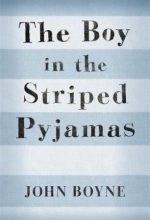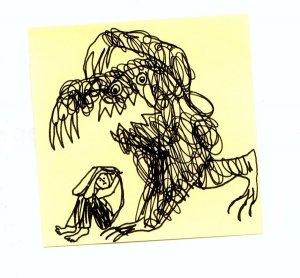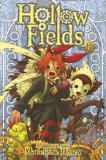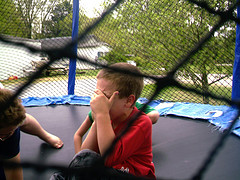moving
I don’t blog here anymore
My book reviews have moved to ofceilingwax.wordpress.com
Join me in my reading adventures
You can call me Doc
 I’m reading Ubby’s Underdogs: The Legend of the Phoenix Dragon by Brenton E. McKenna, Australia’s first Indigenous graphic novel. I’m looking forward to blogging about it when I finish. Magabala Books is launching this exciting tale of adventure and mystery on Friday week, 20 May in Broome. If you’re in the area join the fun at Sun Pictures – click on Ubby’s Invite to see the details.
I’m reading Ubby’s Underdogs: The Legend of the Phoenix Dragon by Brenton E. McKenna, Australia’s first Indigenous graphic novel. I’m looking forward to blogging about it when I finish. Magabala Books is launching this exciting tale of adventure and mystery on Friday week, 20 May in Broome. If you’re in the area join the fun at Sun Pictures – click on Ubby’s Invite to see the details.
And now for why you can call me Doc…
‘All of his [Poe’s] books were burned in the Great Fire. That’s thirty years ago – 2006.’
‘Ah’ said Mr Bigelow wisely, ‘One of those!’
‘Yes, one of those, Bigelow. He and Lovecraft and Hawthorn and Ambrose Bierce and all the tales of terror and fantasy and horror and, for that matter, tales of the future were burned. Heartlessly. They passed a law. Oh, it started very small. In 1999 it was a grain of sand. It began by controlling books of cartoons and then detective books and, of course, films, one way or another, one group or another, political bias, religious prejudice, union pressures; there was always a minority afraid of something, and a great majority afraid of the dark, afraid of the future, afraid of the past, afraid of the present, afraid of themselves and shadows of themselves’– Ray Bradbury (1950) The Martian Chronicles
Luckily for us, Ray Bradbury’s future didn’t eventuate. Now that we’re inundated with comics and graphic novels, I wrote a thesis on them (and it swallowed way too many years of my life). Cos my baby Graphic novels: Enticing teenagers into the library is out in the world, googleable for all, you can read it. I don’t recommend you read it all, just dip into the bits that take your fancy. There is a table of contents, but sadly no index.
This is a nice short summary:
This thesis investigated the information habits of teenagers, including their recreational reading and internet use, and means of encouraging library use among teenagers, particularly through graphic novel collections in public and school libraries in Australia. A mixed methods approach was used which included focus groups with teenagers, a survey of public libraries, and interviews with public and teacher librarians.
The Future of Reading
To continue on the theme of reading books, the March issue of Incite, the news magazine of ALIA, the professional association for librarians and other information professionals, had the theme “The Future of Reading.”
I wrote an article about what the teenagers I interviewed for my research thought about reading, seeing as they are our future. While I had some difficulty sticking to the word limit of 800, there’s a space at the end of the published article (for an ad they didn’t have a taker for) and I could have filled that space with more words, like quotes from the kids. My proof reader Gaby Haddow suggested I delete one quote to get closer to the word count but I could have put multitudes more in. eg.
That book was hell good.
 Despite my friend reading my article and telling me he’d just discovered teenagers didn’t read, one kid did say the above, I think about The Boy in the Striped Pyjamas by John Boyne (David Fickling Books, 2006). I agree with said kid’s opinion on that book. It was an assigned text for their Year 10 English class. There weren’t fun books like that when I was at school, but it wasn’t published back then. A number of the other assigned texts teenagers discussed were studied in my English classes 20 years ago. I understand some of them are classics, but The Cay by Theodore Taylor (Doubleday, 1969) is not a classic. Well, if it is, it’s one of the boring ones.
Despite my friend reading my article and telling me he’d just discovered teenagers didn’t read, one kid did say the above, I think about The Boy in the Striped Pyjamas by John Boyne (David Fickling Books, 2006). I agree with said kid’s opinion on that book. It was an assigned text for their Year 10 English class. There weren’t fun books like that when I was at school, but it wasn’t published back then. A number of the other assigned texts teenagers discussed were studied in my English classes 20 years ago. I understand some of them are classics, but The Cay by Theodore Taylor (Doubleday, 1969) is not a classic. Well, if it is, it’s one of the boring ones.
 My parents like to read what I’ve published, but I think they get a bit bored sometimes. My mum said this one was a lot easier to read because it didn’t have annoying references getting in the way (and I’m sure the length helped, shorter always being better).
My parents like to read what I’ve published, but I think they get a bit bored sometimes. My mum said this one was a lot easier to read because it didn’t have annoying references getting in the way (and I’m sure the length helped, shorter always being better).
All the authors in this issue had to say what they were reading. I was reading Catching Fire by Suzanne Collins and despite my article saying I was reading Catching the Fire, I know what the title is. Katniss started a fire, she didn’t catch one, and I highly recommend the story of her fire, but you should read bk1 first. I’m looking forward to bk3 Mockingjay, released the day before my b.day.
Citation
Snowball, Clare (2010) Teenagers: Our future readers Incite, 31(3), p.13.
Graphic Novels: New Literacies, New Learning
The Australian School Library Association NSW is holding a Professional Development day 27 February at the State Library of NSW: New Literacies, New Learning. Two of the speakers are Di Laycock and Allison Lee and they will both be talking about graphic novels. Both have graphic novel collections in their school libraries and encourage the format’s use in class by their teachers. I cited their previous writing on graphic novels in my thesis. If only I didn’t live so far from Sydney.
Di Laycock, Barker College
Different texts for different times (7 – 12)
This session will encourage teachers to consider graphic novels as different texts for different times; as texts capable of bridging the disconnect between students’ lifeworlds and the classroom, and as texts worthy of facilitating the development of multiliteracies in our students. As well as providing an overview of the codes and conventions of the graphic novel format, the theory and research that support the use of graphic novels for learning and teaching will be discussed via reference to specific examples of graphic novels and practical suggestions as to their use.
Allison Lee, Emanuel School
Different texts for different times (K – 6)
Children and young adults who are constantly surrounded by visual stimuli – movies, television, electronic billboards, magazines, computers, palm pilots, video games etc – have learned to associate images with storytelling. It is therefore easy to see why graphic novels have become increasingly popular over the last 10 years or so. This presentation will explain what graphic novels are (and aren’t), provide practical examples for using graphic novels for upper primary students and discuss their value as a classroom tool.
O happy day!
When I was a kid, the old and the young read comic books, cowboy stories and magazines. These reading materials would make their way around the village, read by all of the interested members of one household and then passed on to the next. The Phantom was, of course, premium.
– Noel Pearson (2009) “Radical Hope: Education and Equality in Australia” Quarterly Essay, no.35, p.37-8.
On Friday I submitted my thesis. Never thought that would happen :P I had a very fun celebratory weekend and now I can blog anytime I like. Sometime (early) next year I’ll hear whether the examiners liked it, but in the meantime I have three articles (at least) to write, from my thesis and other aspects of teenagers’ reading. Right now I have to write a job application. Sadly my idyllic thesis-free life of leisure may only last until the New Year, but I’ll be enjoying it!
The literature of comics
She said it took different skills to interpret the interplay of words and pictures in graphic novels – skills that were important in today’s highly visual world.
“You’re actually reading the pictures at the same time that you’re reading the words, so if you’re not used to it that can be very difficult. It’s something you have to learn.”
The above is a quote from Perth’s daily newspaper The West Australian and it was supplied to reporter Bethany Hiatt during an interview with me :) Last week I was interviewed about graphic novels and my research by Education Editor Ms Hiatt. My brain is mush due to thesis, but I actually made some lucid comments that gave the impression my brain is not mush :P On Saturday the article was published [1]. Some of The West Australian’s articles are reprinted online, but comics just don’t cut it. You can only read it if you’re in Perth and you’re one of those people who read the paper. What newspapers already know (and are desperately grasping for ideas on how they can make money from the younger generation who don’t read papers) I have now worked out.
I felt almost famous being in the newspaper. Unfortunately my fame is only among those older people who read the paper. I’m not denigrating the older generation of newspaper readers and I’m not sure what the cut-off age is, but when I txtd my friends to tell them to look for me in the paper, their answers were along these lines:
- Ignore me (it happens a lot due to most of what I txt being something totally random that I think is enormously funny but no one else does)
- Tell me to save the article for when we next met up
- Tell me he’d look at it at work on Monday
Reading and Breathing
I’m very close to having a thesis to submit but it’s taken quite a bit longer than I planned, due to a nasty monster which kicks at my heels, waiting for the right moment to trample mud all over my life. Monster isn’t the clinical term, most would call this monster depression, but I find euphemisms much more fun. Visits from the monster have been a bit too frequent for my liking this year, so I’m really looking forward to Halloween, when I will have a thesis to submit.*
 At one time I thought I would submit at the same time as Zoë S. but she beat me to it and provided some useful advice on comments to be prepared for in the final stages of writing a thesis, in order to avoid a sociopathic outburst. I also found Zoë’s artistic post-it-note monster of great use. This looks just like the monster scribbled on the inside of my skull which runs circles round my mind, at the most inopportune times.
At one time I thought I would submit at the same time as Zoë S. but she beat me to it and provided some useful advice on comments to be prepared for in the final stages of writing a thesis, in order to avoid a sociopathic outburst. I also found Zoë’s artistic post-it-note monster of great use. This looks just like the monster scribbled on the inside of my skull which runs circles round my mind, at the most inopportune times.
I haven’t been depressed constantly this year (in between I wrote a thesis with only editing keeping me from submission), but during the times I was, I came to the disconcerting conclusion that I couldn’t write a single coherent thesis sentence, but I could read book, after book, after book. Sadly none of these books were part of my lit review. Runaways is listed in my Literature Cited (as opposed to my Reference List) but reading all the vols I’ve got one after the other without a break in between (and this wasn’t the first time, so I already knew what happened) didn’t improve my thesis.
After whinging to my doctor about my inability to write a thesis, but my perfect ability to read a book (as long as it had no connection to my thesis) he told me that while depression makes thinking complex thesis thoughts pretty much impossible, reading, for me, is as automatic as breathing. This leads to the interesting hypothesis that if I stopped reading would I stop breathing? For my continued existence I’m not going to test that out and just keep reading.
*If I don’t have a thesis completus by Halloween I’ll surrender myself to the first zombie I come across and happily join the walking dead.
Australian Comics and Graphic Novels
 I have a list of graphic novels written or illustrated by Australians. It’s not extensive and I often discover titles I’ve missed, but finding Australian graphic novels and comics may become easier. Debbie Cox contacted me to tell about two projects of the National Library of Australia which aim to ensure the library collects published work of Australian comics creators. Collecting Australian Fringe Publishing at the National Library of Australia and The Comics Claiming Project are about the collection and treatment of comics, graphic novels, manga and zines at the NLA. The projects focus on:
I have a list of graphic novels written or illustrated by Australians. It’s not extensive and I often discover titles I’ve missed, but finding Australian graphic novels and comics may become easier. Debbie Cox contacted me to tell about two projects of the National Library of Australia which aim to ensure the library collects published work of Australian comics creators. Collecting Australian Fringe Publishing at the National Library of Australia and The Comics Claiming Project are about the collection and treatment of comics, graphic novels, manga and zines at the NLA. The projects focus on:
- What’s being published by Australian creators and publishers, whether published in Australia or not
- Whether the NLA is adding them to the collection
- If not, how the intake of these materials could be improved
How is this relevant to Australian comics and graphic novels creators?
The NLA needs help ensuring Australian comics, graphic novels, manga and zines are represented in the national collection. For creators this will mean a copy of published work is preserved in a controlled environment and made accessible to library patrons now and in the future. Information about these works will also be made available as a catalogue record to anyone anywhere with access to the internet.
Research into Reading
I’m finalizing the literature review for my thesis. (I may even have a thesis to submit one day soon!) And I revisited two papers:
- “Is there a decline in the reading romance?” by Stephen Krashen and Debra Von Sprecken, and
- “Longitudinal study of the reading attitudes and behaviors of middle school students” by Terry Ley, Barbara Schaer, and Betsy Dismukes.
Krashen and Von Sprecken examined the results of a number of studies of children’s reading [1], including Ley, Schaer, and Dismukes’ longitudinal survey of 160 US students over three years as they progressed from sixth to eighth grade [2].
In their review of the literature Krashen and Von Sprecken looked at “how much children enjoyed reading” and concluded any decrease in reading enjoyment as children age is only slight. Most studies used a 5-point scale and the average was always above 2.5.
At no stage do children show a negative attitude toward reading. [3]





